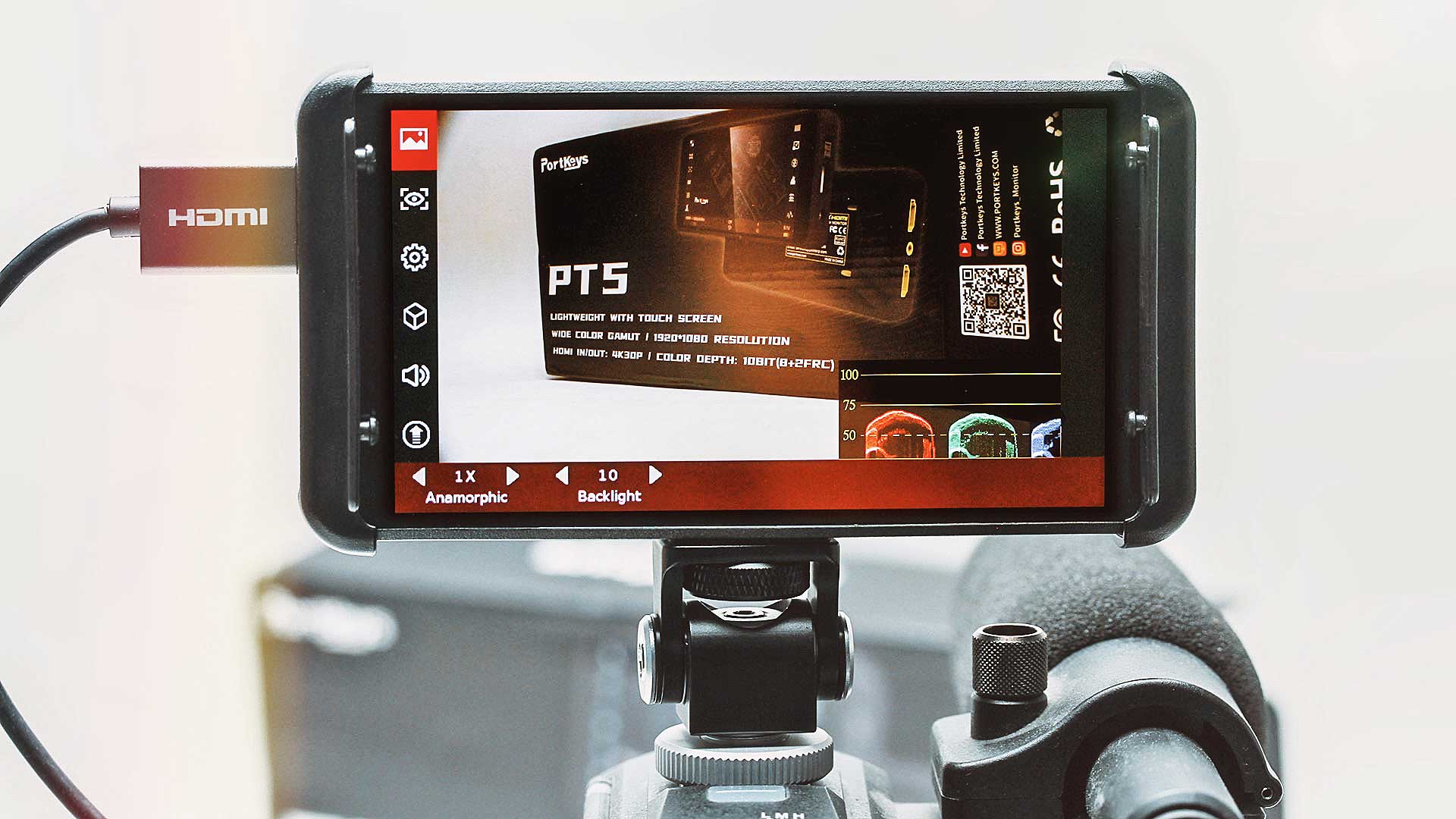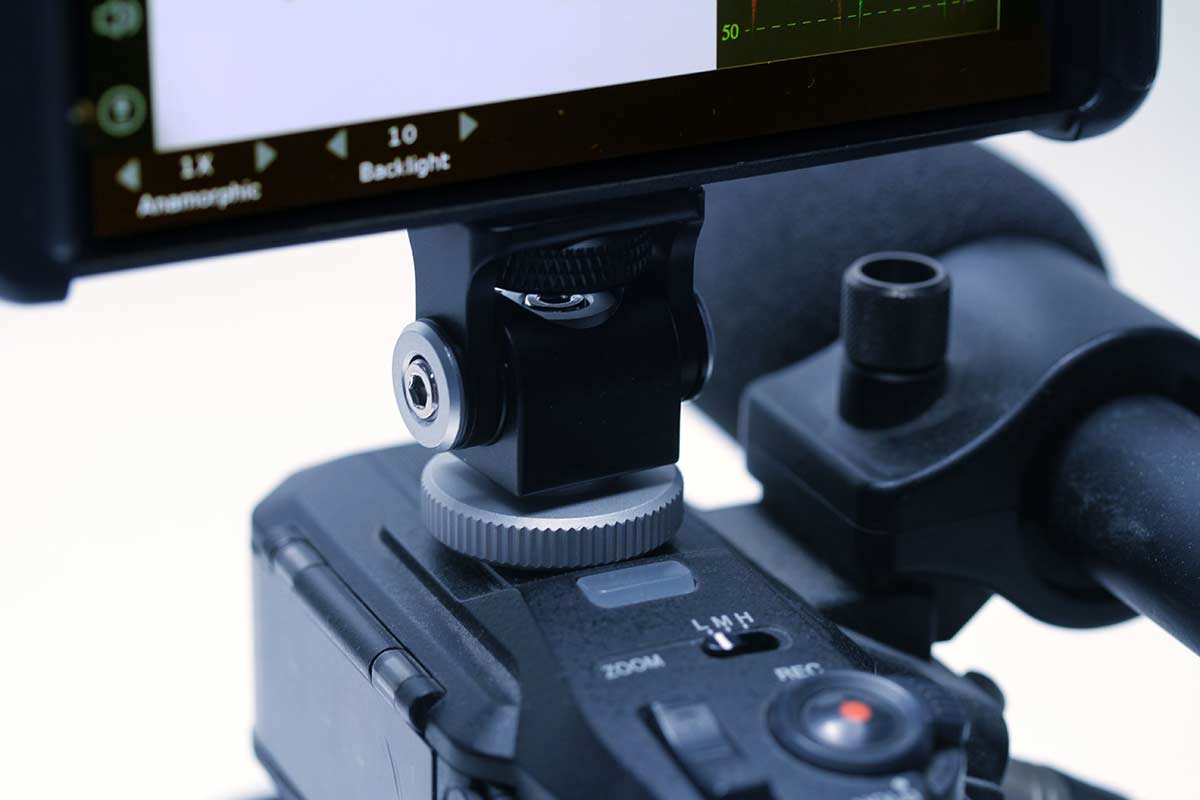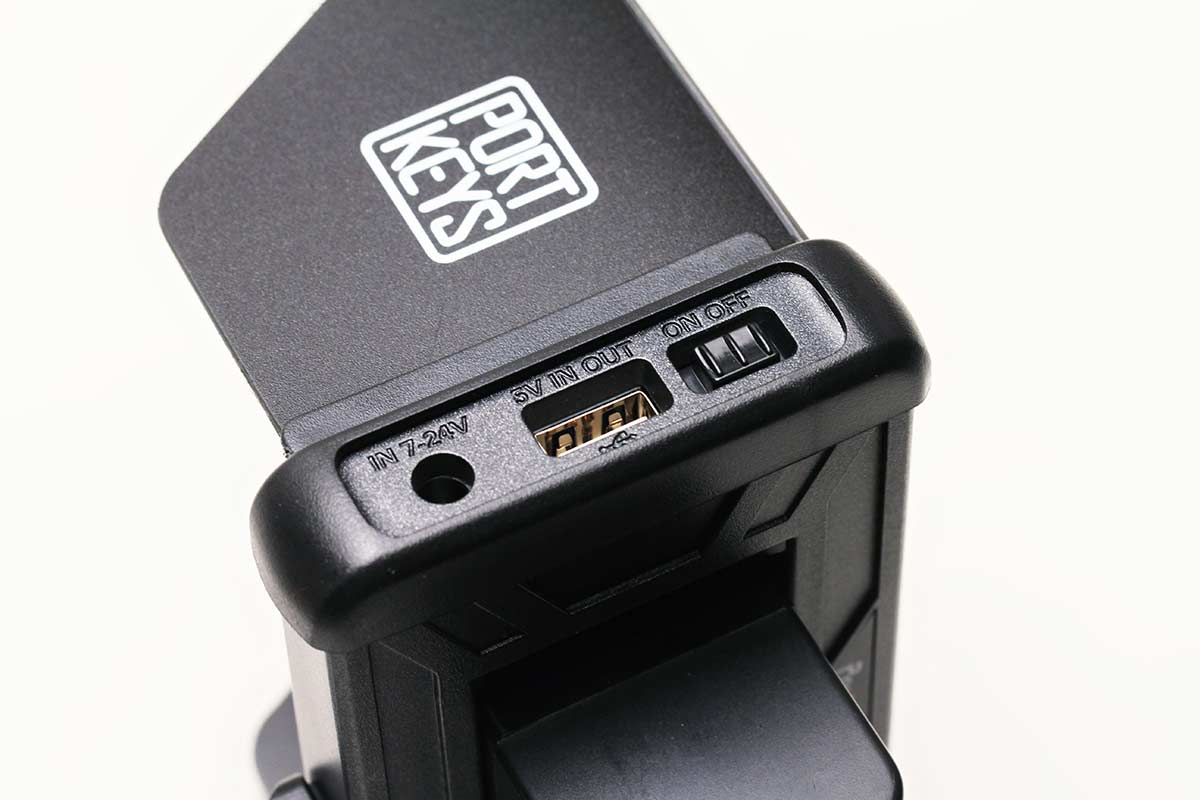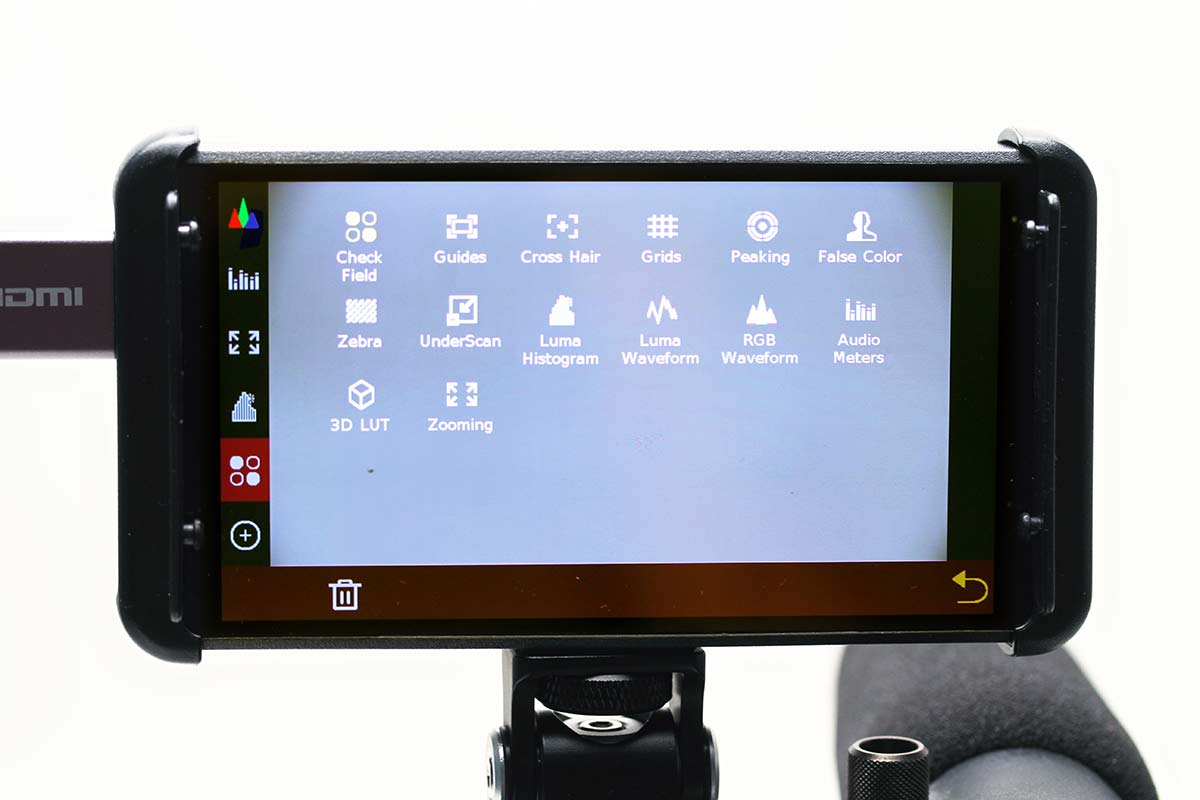
At one time, a full-featured monitor for on-set or on-camera use was a big deal. If you wanted features such as a high-performance waveform monitor and lookup tables, it was an expensive device that chewed through batteries and made a loud whirring sound. If anything shows us that this has changed, it’s Portkeys’ diminutive PT5, which does all those things in a small, very inexpensive box.
At first glance, the PT5 looks like a chunky cellphone if not for the mounting brackets for the sunshade and the connectors on the end. As an entirely touchscreen-operated device, the only conventional control is the on-switch. It’s a proper modern capacitive touchscreen, which implies a gloss black finish to the display. That’s either a helpful way to increase contrast or a fingerprint magnet depending on how you look at it. In the end, it’s no worse than a cellphone.
Portkeys PT5 main features
As so often, on the back is a mount for Sony-style NP-F series batteries, and on the bottom is the 1/4” -20 mounting thread. Unfortunately, many companies provide a rather inadequate ball swivel to sit between monitor and camera. However, this one is much better, having a hinged joint to allow tilt control independently of the pan. This might seem like a limitation to anyone who hasn’t ever tried to operate a camera with the viewfinder canted off at an angle from the lens axis, but it’s the right way to go if you want to be able to land a whip pan accurately. The hinge brake tension can be adjusted with an allen key; the review model was supplied perhaps a little slack.

That's a lot better than the ball mounts we usually see. Lower-profile, too.
So far, there’s nothing much to differentiate it from the crowded market of monitors, which are often made out of readily available cellphone technology. What makes the PT5 interesting is the electronics package, which, on a low-cost display like this one, we might ordinarily expect to be a little lacking. However, this isn’t the case.
This is an HDMI-only display, but it will handle signals in full DCI 4K up to 24 fps, UHD up to 30 fps, and HD up to 60. The TFT-LCD panel itself is HD resolution. It advertises 10-bit colour depth, which, if we look more closely, turns out to mean 8-bit “plus FRC,” which means frame-rate control, a reference to a type of temporal dithering. Few monitors actually do better than this – even some high-end options use FRC to improve brightness precision, which is a respectable specification. What’s important is that it’s not 6-bit plus FRC. A 1000:1 contrast ratio and 500-nit brightness is claimed, although, in use, it looks like any decent cellphone display and is reasonably visible, at least in bright overcast conditions. The sunshade helps, especially when there are fingerprints from touchscreen operations.

USB (for updates and cubes), regrettably non-latching power connectors and the on-off switch.
Picture processing
The good news continues when we start to look at picture processing, test and measurement options. This featherweight monitor supports 3D LUTs loaded from USB devices, plus a wide range of overlays, including audio level metering, peaking, false colour, and, best of all, both luma and RGB parade waveforms. The waveforms appear to be updated at the native frame rate of the video signal, without lag, and with enough resolution to look crisp, at least in the small area of the screen they occupy. Hats off to the firmware people: nice work.
Finally, speed. Waveforms and 3D LUTs require processing time, which can make monitors feel laggy. However, this is an on-camera monitor plausibly to be used for operating. As such, it really can’t be laggy – and thankfully, it’s not. It’s always tough to work out whether the video outputs on cameras are really as fast as they should be, but having played with this on both an old Canon EOS-7D and the JVC GY-LS300, the latency seems very well controlled indeed.

That's really a lot of features packed into such a small, lightweight, inexpensive box.
Downsides? If I was to be really picky, it’s made of plastic, which keeps the weight down to a tiny 130 grams, though it feels, well, plasticky. There appears to be no way to make the waveform fullscreen, which would require a higher-resolution waveform. The power connector is non-latching, though it does take anything from 6 to 24 volts. The overall layout leaves the HDMI connectors sticking out sideways, which feels risky, but this is a widespread problem with displays at all levels. There’s no SDI, and though SDI probably doesn’t make much sense at this end of the market, it’s something of a compliment that it even springs to mind as a requirement. The swipe-right mechanic, which gives us access to the overlay controls, is perhaps slightly awkward; it’s necessary to tap to bring up the menu, then swipe to get at that part of the menu. It’s not a dealbreaker.
Conclusions
In the end, it’s hard to be negative about the Portkeys PT5, and glowing reviews of inexpensive things tend to attract comments, so comment away. CVP sells the PT5 for £154, including tax, which is spare change for something that does LUTs and good, fast, sharp waveforms. Independents will buy them and take joy in the low latency and good waveforms. The high end will purchase them as a backup. Both ought to like what they get.
To find out more, visit the Portkeys website.


Comments